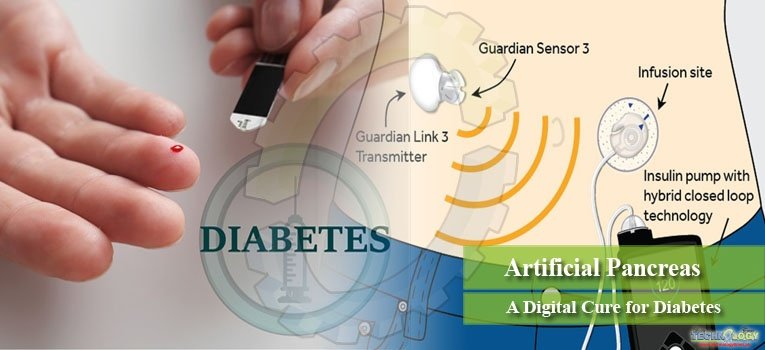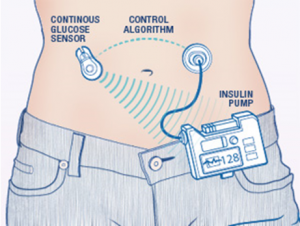The pancreas is an organ in the abdominal cavity of the human body which plays a significant role in the production of important hormones such as insulin and glucagon. These hormones are employed by the body to regulate blood sugar and maintain a perfect balance in the bloodstream.

Pancreas and Diabetes:
In diabetes, the pancreas is unable to produce an adequate amount of insulin causing accumulation of glucose in the blood, a condition known as hyperglycemia. In diabetes type 1, the pancreas fails to produce insulin, causing an enduring damage. Because it is an incurable condition, the patients need insulin therapy and a complete change of lifestyle to maintain their health.
On the other hand, in diabetes type 2, the pancreas does produce insulin but fails to recognize the required amount, a condition also known as insulin resistance. Thus, the blood glucose level either shoots up or becomes very low.
The Artificial Pancreas Device System:
An artificial pancreas device system consists of devices which work together to mimic the function of a healthy pancreas in regulating the blood glucose level. This system not only closely monitors the blood glucose levels but also regulates the delivery of insulin to the body in a computer controlled systemized manner.
The Artificial Pancreas Device System consists of three main devices: a continuous glucose monitoring system (CGM), an insulin infusion pump and a device similar to a glucose meter to calibrate the CGM. A sensor is placed under the skin of the patient which calculates the blood glucose level and transmits this information to the CGM which displays the current level of glucose in the blood and the potential rate or direction of this level.
An algorithm software installed in the controller performs a series of mathematical calculations based on the information from the CGM and then directs instructions to the infusion pump. This algorithm can be run from a computer or a cellular phone easily. The infusion pump as a result of the instructions regulates the amount of insulin to be delivered to the patient through the tissue under the skin.
The use of this device system has been a far more popular and convenient approach among the diabetics, as compared to the insulin injections. Scientists are still working on how to improve the lives of the diabetics, and this artificial pancreas system has proved to be a fairly successful attempt.

Pros and Cons of the Artificial Pancreas:
The system of artificial pancreas has not just fulfilled the scientists’ urge to develop something new, but their use has also helped to minimize the risk of developing long term health issues in diabetic patients while monitoring the blood glucose levels at all times.
Patients who are receiving treatment through the artificial pancreas system have also reported to have achieved a more flexible lifestyle, with a rather relaxed diet as they are allowed to eat whatever they want, whenever they want. Furthermore, the convenience of not having to use syringes to inject insulin, and to not calculate the precise doses according to their daily diet has become a huge sigh of relief for the patients aswell, as the pumps do it all on their own.
Despite the fact that the use of artificial pancreas has made a promise about its ability to manage diabetes, scientists have also discovered some downfalls that come with it. Although there is still no cure for diabetes and Artificial Pancreas System can definitely make the lives of diabetics a lot easier, it is still not a permanent solution or cure for diabetes.
Since, the two devices it employs must be properly attached and must be carried at all times, it often becomes bothersome for people. Furthermore, poor attachment might also lead to some serious or even fatal health risks, along with rare chances of skin irritation and skin infections.
Hence, it depends on the patients, their convenience and their long term experience of the Artificial Pancreas System to decide if the use of this new technology really is a digital and clinical cure for diabetes.